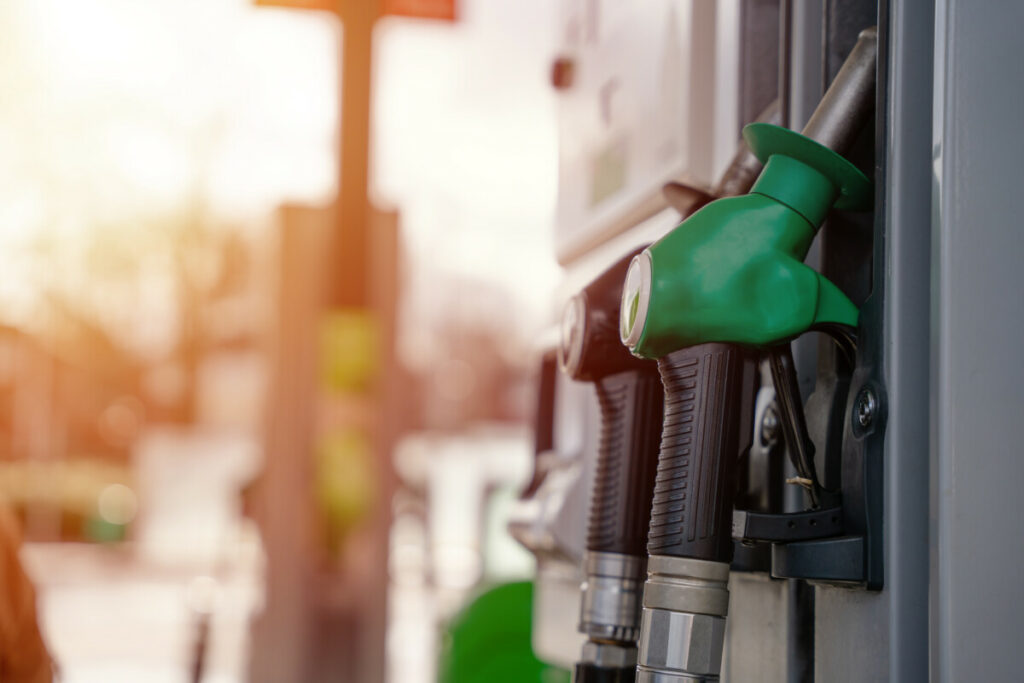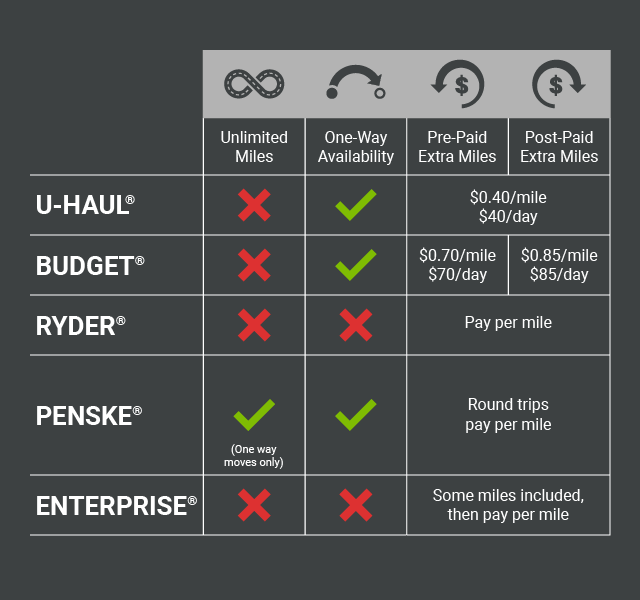Rental Truck Gas Mileage: Your Comprehensive Guide to Saving Fuel and Money cars.truckstrend.com
Renting a truck for a move or a large hauling project is a rite of passage for many, offering the much-needed space and power that a personal vehicle simply can’t provide. However, amidst the excitement of planning, packing, and heavy lifting, one critical factor often gets overlooked until the fuel gauge starts plummeting: rental truck gas mileage. Far from being a minor expense, the fuel consumed by these large vehicles can significantly impact your overall budget, sometimes accounting for a substantial portion of your total moving costs.
Understanding rental truck gas mileage isn’t just about saving a few dollars at the pump; it’s about efficient planning, realistic budgeting, and making informed decisions that can reduce stress and unexpected expenses during an already demanding time. This comprehensive guide will demystify the complexities of rental truck fuel efficiency, providing you with the knowledge and practical strategies to navigate your next haul with confidence and cost-effectiveness. From understanding what influences mileage to actionable tips for improvement and crucial budgeting advice, we’ll cover everything you need to know to make your rental truck experience as economical as possible.
Rental Truck Gas Mileage: Your Comprehensive Guide to Saving Fuel and Money
The Core Factors Influencing Rental Truck Gas Mileage
Unlike the sleek, aerodynamic design of a modern sedan, rental trucks are built for utility, not fuel economy. Their boxy shapes, heavy frames, and powerful engines inherently lead to lower miles per gallon (MPG). However, the exact mileage you’ll experience isn’t static; it’s a dynamic figure influenced by a combination of factors. Understanding these elements is the first step toward estimating and potentially improving your fuel efficiency.
1. Truck Size and Type
This is arguably the most significant determinant of gas mileage. Generally, the larger the truck, the worse its fuel economy.
- Cargo Vans & Pickup Trucks: These are the most fuel-efficient options in the rental fleet, often achieving 15-20 MPG. They are suitable for smaller loads or local deliveries.
- 10-Foot Box Trucks: A popular choice for small apartments or dorm rooms, these typically offer 10-14 MPG.
- 15-Foot Box Trucks: Ideal for one to two-bedroom homes, their mileage drops to around 8-12 MPG.
- 20-Foot Box Trucks: Designed for two to three-bedroom homes, expect 7-10 MPG.
- 26-Foot Box Trucks: The largest consumer rental trucks, perfect for four-bedroom homes or more, are the least efficient, often getting a mere 6-10 MPG.

2. Load Weight and Distribution

It’s simple physics: the heavier the truck, the more fuel it needs to move. A fully loaded 26-foot truck carrying thousands of pounds of furniture will consume significantly more fuel than an empty one. Furthermore, how you distribute that weight matters. An unbalanced load can make the truck harder to handle, requiring more power and thus more fuel. Always aim to distribute weight evenly and place heavier items lower and centered.
3. Aerodynamics (or Lack Thereof)
The boxy design of rental trucks is terrible for aerodynamics. They act like giant bricks pushing through the air, creating immense drag, especially at higher speeds. This is why highway driving, where you maintain higher speeds, can be particularly fuel-intensive for these vehicles, even if the road is flat.
4. Driving Habits
Your driving style has a profound impact on fuel consumption.

- Aggressive Driving: Rapid acceleration, sudden braking, and frequent lane changes burn significantly more fuel than smooth, consistent driving.
- Speed: Fuel economy generally decreases above 55-60 mph for most vehicles, and this effect is amplified in large trucks due to increased air resistance.
- Idling: Leaving the truck idling, even for short periods, wastes fuel without covering any distance.
5. Terrain and Route
Driving uphill requires the engine to work harder, consuming more fuel. Conversely, driving downhill can be more efficient. A route with frequent stops and starts (city driving) will yield worse mileage than a continuous highway drive, even if the highway speed is higher. Plan your route to minimize elevation changes and avoid congested areas if possible.
6. Maintenance and Condition
While largely out of the renter’s control, a well-maintained truck (properly inflated tires, clean air filter, well-tuned engine) will always be more fuel-efficient than one that’s neglected. Rental companies are generally good about maintenance, but it’s something to keep in mind.
7. Weather Conditions
Strong headwind can dramatically reduce fuel economy by increasing aerodynamic drag. Rain and snow can also increase rolling resistance and make the engine work harder.
Estimating Your Rental Truck Fuel Costs
Given the variable nature of rental truck gas mileage, accurate estimation is key to budgeting. Here’s a practical approach:
- Determine Your Truck Size: Based on your moving needs, select the appropriate truck size.
- Estimate Your Total Distance: Use online mapping tools (Google Maps, etc.) to calculate the one-way or round-trip mileage for your journey. Add a buffer for potential detours or local driving at your destination.
- Research Typical MPG for Your Truck Size: Refer to the ranges provided earlier or look up general estimates for the specific truck model you’re considering (e.g., Ford E-Series, GMC Savana). Always err on the side of caution and use the lower end of the estimated MPG range for your calculations, especially if you anticipate heavy loads or challenging terrain.
- Check Current Fuel Prices: Look up average fuel prices along your route using apps like GasBuddy or AAA. Factor in potential price fluctuations.
- Calculate Estimated Fuel Cost:
- Total Gallons Needed = Total Miles / Estimated MPG
- Total Fuel Cost = Total Gallons Needed x Price Per Gallon
Example:
-
Truck Size: 15-foot box truck (estimated 8-12 MPG)
-
Total Distance: 300 miles
-
Conservative Estimated MPG: 8 MPG
-
Average Fuel Price: $3.50/gallon
-
Gallons Needed = 300 miles / 8 MPG = 37.5 gallons
-
Estimated Fuel Cost = 37.5 gallons x $3.50/gallon = $131.25
Always add a buffer of 10-20% to your estimated fuel cost to account for unforeseen circumstances, higher-than-expected fuel prices, or slightly worse mileage.
Practical Tips for Improving Rental Truck Gas Mileage
While you can’t transform a box truck into a hybrid, you can adopt several strategies to maximize its fuel efficiency and minimize your expenses.
Before You Drive: Preparation is Key
- Choose the Right-Sized Truck: Resist the urge to rent a larger truck "just in case." An oversized truck is heavier and less aerodynamic, burning more fuel than necessary for your load. Conversely, don’t try to cram everything into a truck that’s too small, as an overloaded truck will also suffer from poor mileage and be less safe.
- Pack Smart and Light: Minimize unnecessary items. If it’s not essential for the move, leave it behind or ship it separately. Heavy items like books, tools, and appliances significantly impact weight.
- Distribute Weight Evenly: Load heavier items first, placing them low and centered over the truck’s axles. Distribute weight from side to side to maintain balance. An unbalanced load can increase drag and make the engine work harder.
- Check Tire Pressure: If possible, check the tire pressure before you leave the rental lot (or ask the rental agent to do so). Under-inflated tires increase rolling resistance and reduce fuel economy. Proper inflation is crucial for safety as well.
- Plan Your Route Strategically:
- Avoid Traffic: Use navigation apps to find routes that minimize congestion and stop-and-go driving.
- Minimize Hills: If you have a choice between a flatter route and a hillier one, opt for the flatter path, even if it’s slightly longer. Climbing hills consumes a lot of fuel.
- Consolidate Stops: If you have multiple pick-up or drop-off points, plan them logically to avoid backtracking.
While You Drive: Smart Habits Behind the Wheel
- Maintain a Steady Speed: This is perhaps the most impactful driving habit for fuel efficiency. Avoid rapid acceleration and sudden braking. Use cruise control on highways to maintain a consistent speed.
- Adhere to the Speed Limit (or Slightly Below): As mentioned, fuel economy drops significantly at higher speeds due to increased air resistance. While it might feel slow, driving a large truck at 55-60 mph on highways will generally yield better mileage than 70 mph.
- Avoid Excessive Idling: If you’re going to be stopped for more than 30 seconds (e.g., waiting for someone, pulled over for a break), turn off the engine. Idling consumes fuel without covering any distance.
- Anticipate Traffic: Look far ahead to anticipate braking or accelerating. Smoothly lift your foot off the gas to coast when approaching a red light or slowing traffic, rather than slamming on the brakes.
- Use Engine Braking on Downhills: For manual transmission trucks (less common for consumer rentals) or those with a "tow/haul" mode, using a lower gear to control descent on long downhills can save brakes and sometimes fuel, as the engine isn’t actively injecting fuel when coasting in gear.
- Close Windows at Highway Speeds: Open windows create aerodynamic drag, especially in a large vehicle. Use the air conditioning sparingly, as it also consumes fuel, but the drag from open windows at highway speeds can be worse.
Understanding Fuel Costs and Budgeting for Your Rental Truck
Fuel is often the second-largest expense (after the rental fee itself) when renting a truck. Proper budgeting is crucial to avoid surprises.
- Fuel Type: Almost all consumer rental trucks (U-Haul, Penske, Budget) use regular unleaded gasoline. Always double-check the fuel cap or ask the rental agent if you’re unsure. Using the wrong fuel type can severely damage the engine.
- Tank Size: Rental truck fuel tanks can be surprisingly large, ranging from 30 gallons for smaller trucks to over 50 gallons for the largest ones. Filling a large tank from empty can cost $150-$250 or more, depending on fuel prices.
- Refueling Policy: Rental companies almost universally require you to return the truck with the same amount of fuel it had when you picked it up (usually full). Failing to do so will result in steep refueling charges (often $5-$10 per gallon), significantly more expensive than filling it yourself at a gas station. Always plan to stop at a gas station near your drop-off location.
- Budget Buffer: Always allocate more than your calculated fuel cost. A 10-20% buffer can absorb unexpected price hikes, detours, or less-than-optimal driving conditions.
Common Rental Truck Types and Their Typical Gas Mileage
Here’s a quick reference table outlining typical MPG ranges for popular rental truck sizes, along with an estimated fuel cost for a hypothetical 100-mile trip at $3.50/gallon. Please note: These are general estimates and actual mileage will vary.
| Truck Type / Size | Typical MPG Range (Empty/Light Load) | Estimated MPG (Real-World, Loaded) | Gallons for 100 Miles (at Est. MPG) | Estimated Cost for 100 Miles (at $3.50/gal) | Best Use Case |
|---|---|---|---|---|---|
| Cargo Van | 18-22 MPG | 15-20 MPG | 5.0 – 6.7 gallons | $17.50 – $23.45 | Small moves, local deliveries, small furniture |
| Pickup Truck | 15-20 MPG | 12-18 MPG | 5.6 – 8.3 gallons | $19.60 – $29.05 | Hauling specific items, towing small trailers |
| 10-Foot Box Truck | 12-16 MPG | 10-14 MPG | 7.1 – 10.0 gallons | $24.85 – $35.00 | Studio/1-bedroom apartment, dorms |
| 15-Foot Box Truck | 10-14 MPG | 8-12 MPG | 8.3 – 12.5 gallons | $29.05 – $43.75 | 1-2 bedroom home, small office |
| 20-Foot Box Truck | 8-12 MPG | 7-10 MPG | 10.0 – 14.3 gallons | $35.00 – $50.05 | 2-3 bedroom home, larger office |
| 26-Foot Box Truck | 7-10 MPG | 6-10 MPG | 10.0 – 16.7 gallons | $35.00 – $58.45 | 4+ bedroom home, large commercial moves |
- Note: "Estimated MPG (Real-World, Loaded)" assumes a typical moving load and mixed highway/city driving conditions. Your actual results may vary.
Challenges and Misconceptions About Rental Truck Gas Mileage
Despite the clear benefits of understanding fuel efficiency, several challenges and common misconceptions persist:
- Underestimating Fuel Costs: This is the most common pitfall. People often focus on the rental fee and forget that fuel can easily add hundreds of dollars to a long-distance move.
- "All Trucks are the Same": Many assume a 10-foot truck gets similar mileage to a 26-foot truck, which is far from the truth. The size and weight differences are substantial.
- Ignoring the Impact of Weight: People sometimes forget that every pound added to the truck directly impacts fuel consumption.
- Rental Companies Don’t Guarantee MPG: Rental agreements rarely, if ever, specify a guaranteed MPG. They provide a vehicle; its efficiency depends on your usage and external factors.
- Diesel vs. Gasoline: Most consumer rental trucks run on gasoline. Larger commercial trucks (and some very large moving trucks for long distances) might be diesel, which generally offers better MPG but has a higher per-gallon cost and fewer fueling stations. Always confirm the fuel type.
Solutions:
- Educate Yourself: Be proactive in researching and estimating.
- Budget Realistically: Include a significant fuel line item in your moving budget.
- Communicate: If you have questions about fuel type or tank size, ask the rental agent.
Frequently Asked Questions (FAQ) About Rental Truck Gas Mileage
Q1: Do rental companies provide specific MPG estimates for their trucks?
A1: Rarely, if ever. Rental companies focus on providing the truck, not guaranteeing its fuel efficiency. They might offer very broad ranges, but actual mileage depends heavily on how you load and drive the truck.
Q2: Is it cheaper to return the truck full of gas or let the rental company refuel it?
A2: It is almost always cheaper to refuel the truck yourself before returning it. Rental companies charge a premium for their refueling service, often significantly higher per gallon than pump prices, plus a service fee.
Q3: How much does it cost to fill up a rental truck?
A3: This depends on the truck’s tank size and current fuel prices. A 26-foot truck might have a 50-gallon tank, so at $3.50/gallon, it would cost around $175 to fill from empty. Smaller trucks have smaller tanks, costing less.
Q4: Does towing a car with a rental truck significantly affect gas mileage?
A4: Yes, absolutely. Towing a car adds significant weight and aerodynamic drag, which can reduce your truck’s gas mileage by 25% to 50% or even more, depending on the truck size, car weight, and terrain. Factor this into your fuel budget if you plan to tow.
Q5: Are older rental trucks less fuel-efficient than newer ones?
A5: Potentially. While rental companies maintain their fleets, older vehicles might have more wear and tear, less efficient engines, or older technologies that could slightly reduce fuel economy compared to brand new models.
Q6: What fuel type do rental trucks use?
A6: The vast majority of consumer rental trucks (like those from U-Haul, Penske, and Budget) use regular unleaded gasoline. Always check the fuel cap or ask the rental agent to confirm.
Conclusion
Navigating the world of rental truck gas mileage doesn’t have to be a guessing game. By understanding the key factors that influence fuel consumption, employing smart driving habits, and diligently planning your budget, you can significantly reduce the financial impact of your next move or hauling project. From choosing the right-sized truck to maintaining steady speeds on the highway, every decision contributes to your overall fuel efficiency.
Don’t let the hidden costs of fuel catch you off guard. Approach your rental truck experience with an informed mindset, prioritize careful planning, and embrace fuel-saving techniques. By doing so, you’ll not only save money but also contribute to a smoother, more predictable, and less stressful journey, ensuring your focus remains on the task at hand, not the rapidly diminishing fuel gauge.



